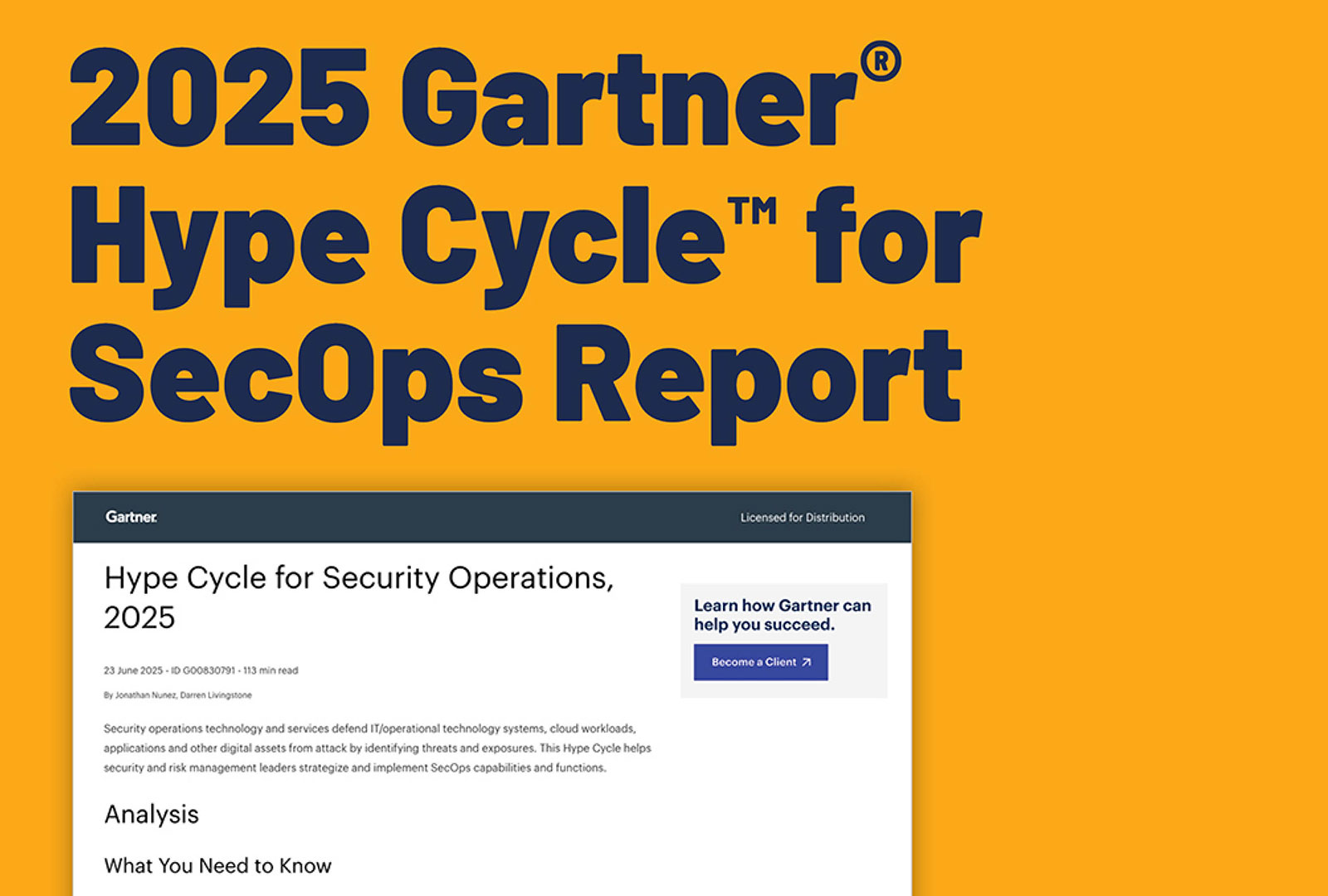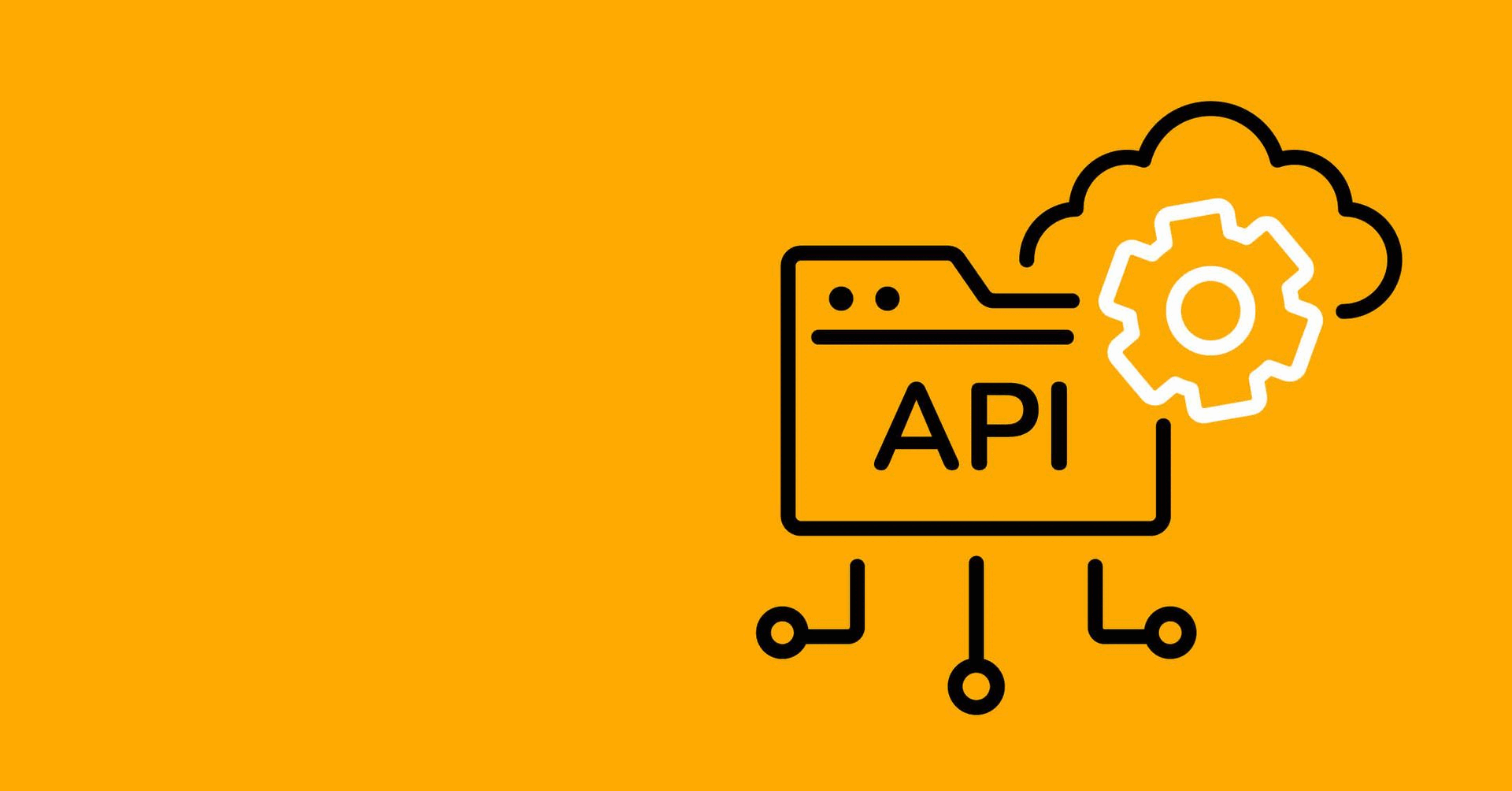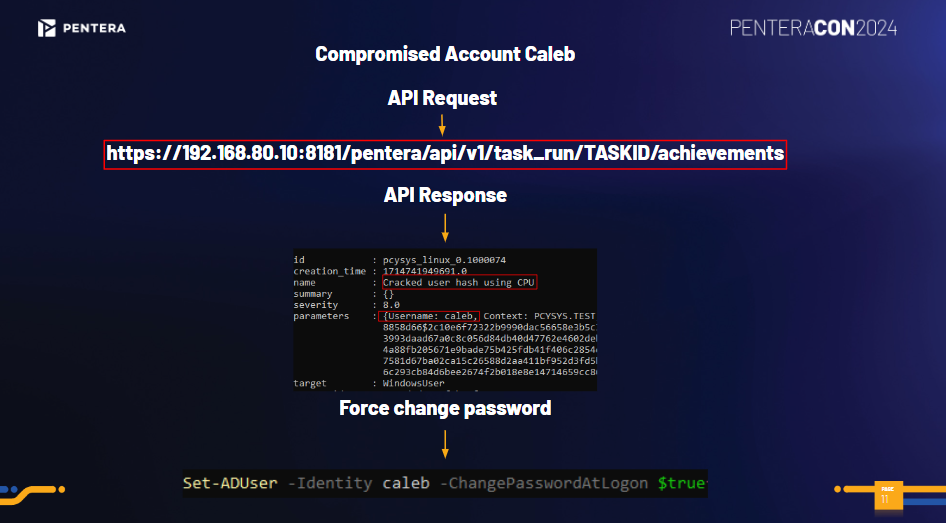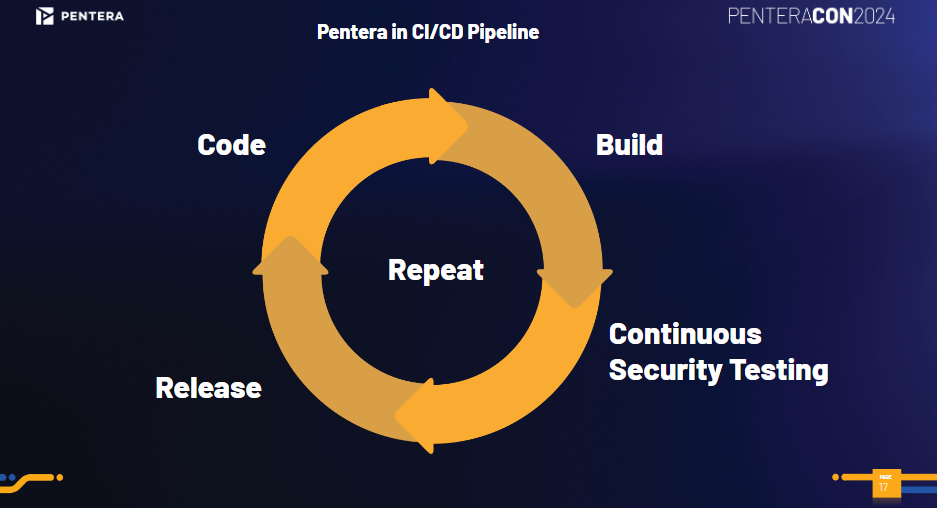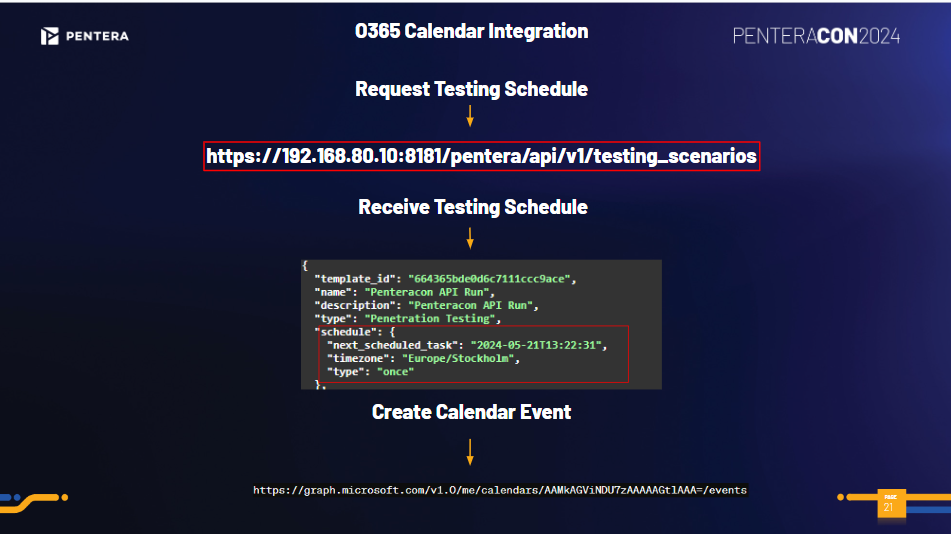If you’re looking for ways to automate and streamline your security validation operations, the Pentera API is a powerful tool to have in your arsenal. With capabilities that range from real-time visibility into validation testing operations and findings to seamless integration with automated workflows, the Pentera API is all about helping security teams act faster, reduce manual work, improve visibility, and stay ahead of vulnerabilities.
Why use the Pentera API?
Here are just a few examples of what you can do with the Pentera API:
- Quickly Remediate Compromised User Accounts: Assess if identities are compromisable through black box, grey box, or password strength tests and automate critical response actions like password resets and user notifications.
- Integrate Security Validation into DevSecOps: Catch vulnerabilities earlier within your CI/CD pipeline to ensure that security is built into every release.
- Improve Testing Schedule Visibility with Office 365: Share testing schedules, enhancing coordination with the SOC and IT teams.
Let’s dive into three real-world use cases to see how the Pentera API can make a difference in your security workflows
Automatically Change Passwords for Compromised Accounts
When dealing with compromised accounts, speed is key to minimizing damage. The Pentera API allows you to automate essential responses—like forced password changes and user notifications—saving valuable time and resources.
Objective: Respond swiftly to compromised accounts detected by Pentera.
Execution:
- Forced Password Change: Use the achievements endpoint (/task_run/TASKID/achievements) to get a list of compromised accounts. From there, automate password resets with PowerShell’s Set-ADUser function, requiring a password change upon the next login.
Automated Response to Compromised Accounts: Swift action to minimize risk. - Email Notifications: For a softer approach, gather compromised accounts through the same endpoint and send automated emails to affected users using PowerShell’s Send-MailMessage function. This option notifies users of the need for a password change without forcing immediate action.
- Example Flow: Imagine a compromised account belonging to “Caleb.” By calling the achievements endpoint, retrieve Caleb’s account details and trigger an automatic password change or send him an alert to update his credentials.
Impact: This automation of compromised account management minimizes manual interventions and accelerates response time, allowing your team to focus on higher-priority tasks.
Embedding Pentera in CI/CD Pipelines for Early Security Testing
Embedding Pentera into your CI/CD pipeline is an effective way to catch vulnerabilities early in the development process. This approach identifies risks before they reach production, minimizing the chance of last-minute fixes.
Objective: Secure your DevSecOps workflows by integrating automated Pentera scans into your CI/CD process.
Execution:
- Initiate Automated Scans: Using the start_run endpoint (/task/TEMPLATE_ID/start_run), add Pentera scans as a step in your CI/CD pipeline. With each new build, you can set up targeted scans—web-targeted or broader gray-box scenarios—depending on the application’s complexity.
Integrating Pentera in DevSecOps: Catching vulnerabilities earlier in the CI/CD pipeline. - Pipeline Workflow: When a developer builds a new feature or application, the CI/CD pipeline initiates a Pentera scan. Any detected vulnerabilities are flagged and can be resolved early on, allowing for smoother, more secure releases.
- Impact: This integration prevents deploying vulnerable applications and reduces time spent on last-minute security fixes. By catching issues earlier, you maintain an agile yet secure development cycle.
Using Office 365 to Keep Track of Pentera Test Schedules
Large organizations running continuous Pentera tests can benefit from visibility into testing schedules. Integrating Pentera’s testing scenarios with Office 365 calendars provides an overview of upcoming tests, improving communication and collaboration across departments.
Objective: Centralize testing schedules for better coordination, especially for SOCs and IT management.
Execution:
- Retrieve Testing Scenarios: The testing_scenarios endpoint (/testing_scenarios) provides a complete schedule of tests, including details like scenario name, description, start time, time zone, and frequency.
- Push to O365 Calendar: Integrate this schedule into an Office 365 calendar using the Microsoft Graph API. Pentera test events will update automatically, ensuring accuracy without manual input.
Keep Your Team in Sync: Pentera test schedules integrated with Office 365 Calendar. - Cross-Team Collaboration: By sharing the schedule, the SOC can verify if alerts stem from Pentera tests, reducing false alarms and ensuring smooth operations.
Impact: Centralized scheduling reduces confusion, enhances collaboration, and helps keep everyone informed about ongoing tests.
What’s Next for Pentera API?
Looking ahead, the Pentera API continues to expand with more endpoints and functionalities. Based on previously received user feedback, further additions include the option to require approvals before a scan can be conducted, enabling even finer control over automated security processes. These upcoming enhancements will bring further value to security teams looking to scale and customize their API integrations.
Ready to Start?
The Pentera API empowers security teams to automate critical workflows, enhancing security, productivity, and collaboration. With use cases like compromised account management, DevSecOps integration, and O365 calendar synchronization, the Pentera API can play a transformative role in proactive security management.
Ready to automate? Explore the Pentera Platform to see how it can simplify your security workflows and add measurable value to your cybersecurity strategy.
